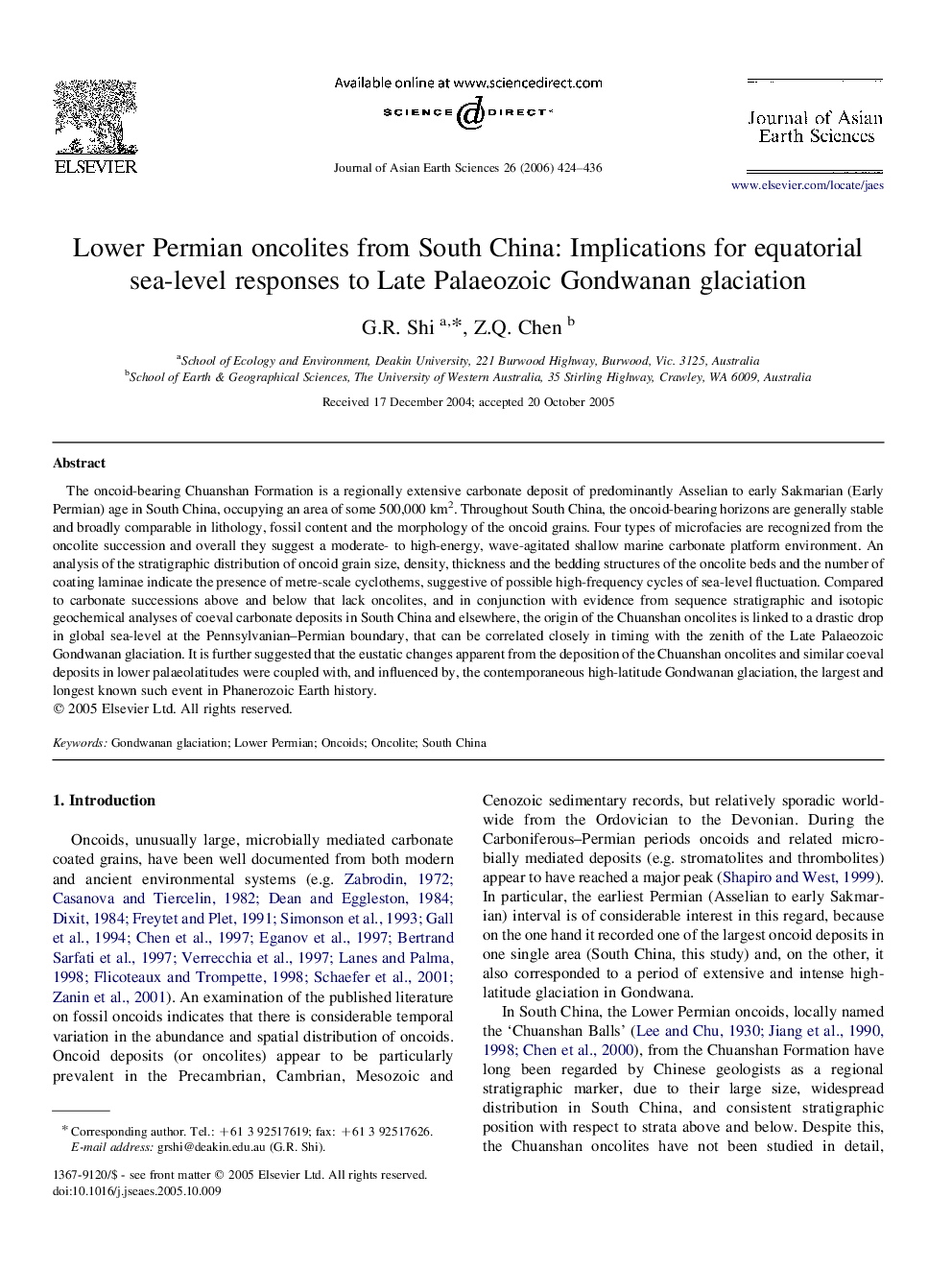| Article ID | Journal | Published Year | Pages | File Type |
|---|---|---|---|---|
| 4732618 | Journal of Asian Earth Sciences | 2006 | 13 Pages |
The oncoid-bearing Chuanshan Formation is a regionally extensive carbonate deposit of predominantly Asselian to early Sakmarian (Early Permian) age in South China, occupying an area of some 500,000 km2. Throughout South China, the oncoid-bearing horizons are generally stable and broadly comparable in lithology, fossil content and the morphology of the oncoid grains. Four types of microfacies are recognized from the oncolite succession and overall they suggest a moderate- to high-energy, wave-agitated shallow marine carbonate platform environment. An analysis of the stratigraphic distribution of oncoid grain size, density, thickness and the bedding structures of the oncolite beds and the number of coating laminae indicate the presence of metre-scale cyclothems, suggestive of possible high-frequency cycles of sea-level fluctuation. Compared to carbonate successions above and below that lack oncolites, and in conjunction with evidence from sequence stratigraphic and isotopic geochemical analyses of coeval carbonate deposits in South China and elsewhere, the origin of the Chuanshan oncolites is linked to a drastic drop in global sea-level at the Pennsylvanian–Permian boundary, that can be correlated closely in timing with the zenith of the Late Palaeozoic Gondwanan glaciation. It is further suggested that the eustatic changes apparent from the deposition of the Chuanshan oncolites and similar coeval deposits in lower palaeolatitudes were coupled with, and influenced by, the contemporaneous high-latitude Gondwanan glaciation, the largest and longest known such event in Phanerozoic Earth history.
